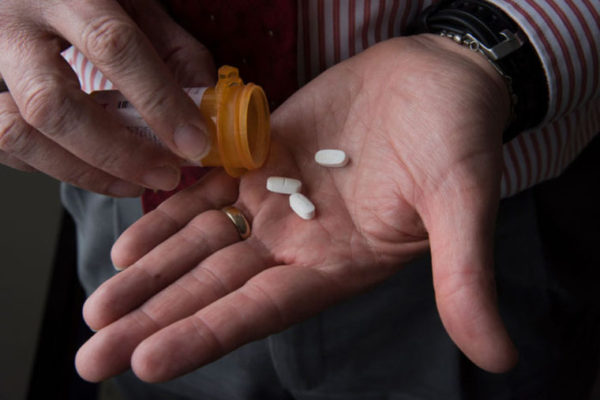With more than 2 million Americans suffering from an opioid use disorder and the escalating rate of deaths from opioid overdoses reaching about 130 per day, efforts to date have had little impact in curbing this crisis across the country.
As a result, a committee of the National Academies of Sciences, Engineering and Medicine released on March 20 a list of conclusions to deploy the use of life-saving, evidence-based medications with maximum effect.
“This is an outstanding committee that was both scientifically diligent and efficient with addressing America’s opioid epidemic,” said David Patterson Silver Wolf, associate professor at the Brown School at Washington University in St. Louis and part of the committee that wrote the consensus study report.

“The committee’s final report and the conclusions generated must be acted on by all concerned, from our federal agencies down to every system where an individual suffering from an opioid use disorder might enter,” he said.
The committee’s statement of task was to support the dissemination of accurate, patient-focused information about treatments for addiction, and to help provide scientific solutions to the current opioid crisis.
People who suffer from an opioid use disorder (OUD), which is caused by the prolonged use of prescription opioids and/or heroin, are at a 20-fold greater risk of early death due to overdose, untreated infectious diseases, trauma and suicide.
The committee found that OUD is a chronic brain disease resulting from persistent opioid use on brain structures and functioning. The altered brain can be treated with life-saving, FDA-approved medications.
These medications — methadone, buprenorphine, and extended-release naltrexone — are not available to most of the people who need them. By alleviating withdrawal symptoms and/or reducing opioid cravings, the medications help individuals to restore their functionality and save lives, Patterson Silver Wolf said.
The committee’s report indicated: “Curbing the epidemic will require an ‘all hands on deck’ strategy across every sector — health care, criminal justice and beyond — because no sector alone will be able to resolve the crisis. Making access to medications much broader and more equitable is a high priority for making meaningful progress in saving lives of those with OUD.”
The committee developed seven conclusions:
- Opioid use disorder is a treatable chronic brain disease.
- FDA-approved medications to treat opioid use disorder are effective and save lives.
- Long-term retention on medications to treat opioid use disorder is associated with improved outcomes.
- A lack of availability of behavioral interventions is not a sufficient justification to withhold medications to treat opioid use disorder.
- Most people who could benefit from medication-based treatment for opioid use disorder do not receive it, and access is inequitable across subgroups of the population.
- Withholding or failing to have available all classes of FDA-approved medication for the treatment of opioid use disorder in any care or criminal justice setting is denying appropriate medical treatment.
- Confronting the major barriers to the use of medications to treat opioid use disorder is critical to addressing the opioid crisis.
Patterson Silver Wolf is the chief research officer at the CAPA Clinic, a new partnership between the Brown School and Preferred Family Healthcare, a substance use disorder treatment program in St. Louis.
“It is our intention to follow the committee’s conclusions, along with leveraging the latest science and technologies,” he said.
“This is my 30th year of sustained recovery from alcohol and drugs,” he said. “The stigma associated with addiction and the lack of science-based practices has not changed much since I entered treatment in 1989. I hope this committee’s report, along with new technology tools, will be the mechanisms that finally begins to change our treatment industry.”



